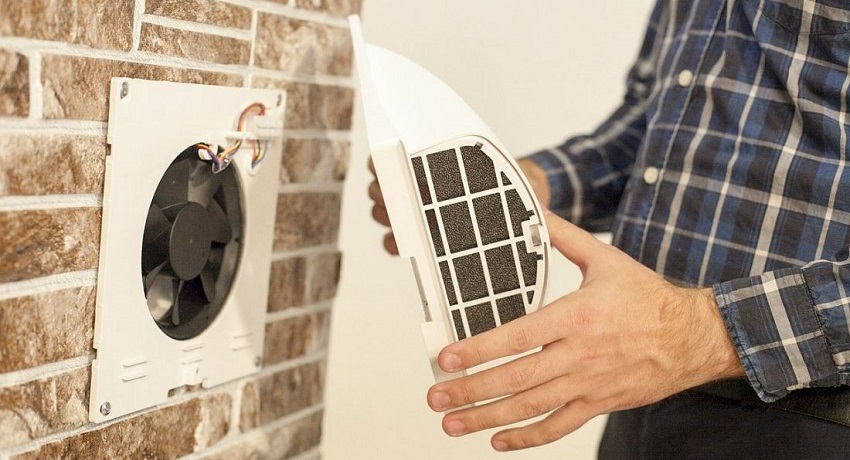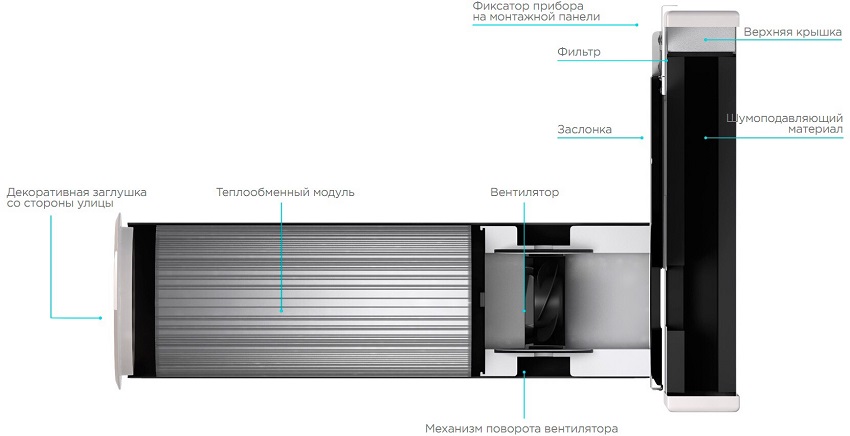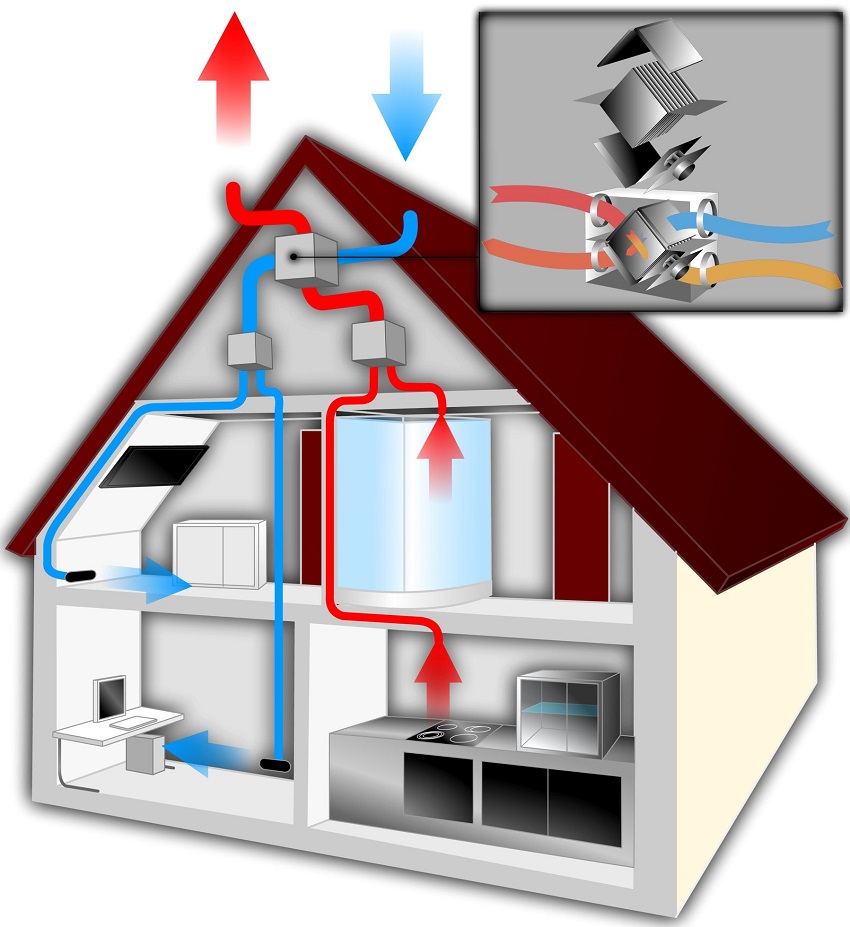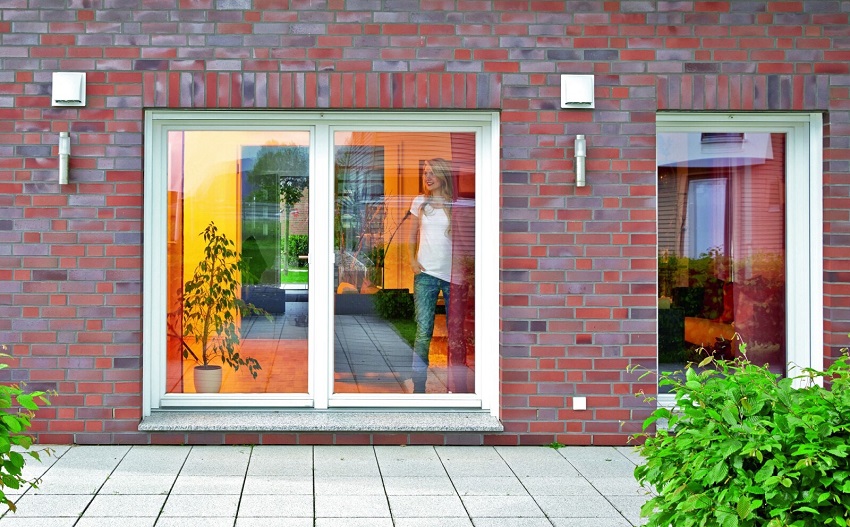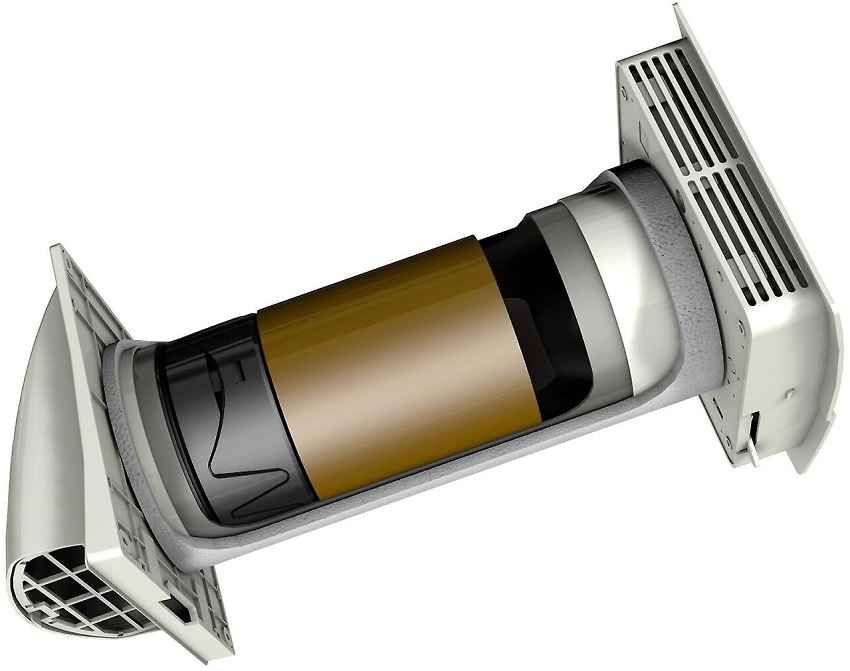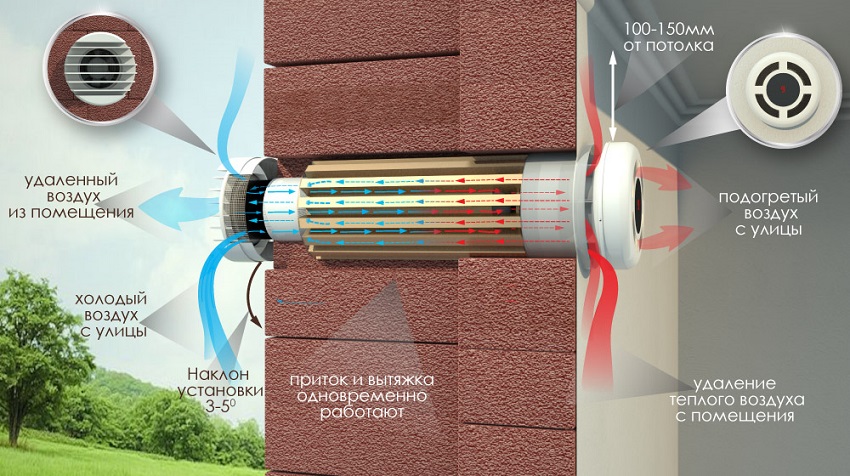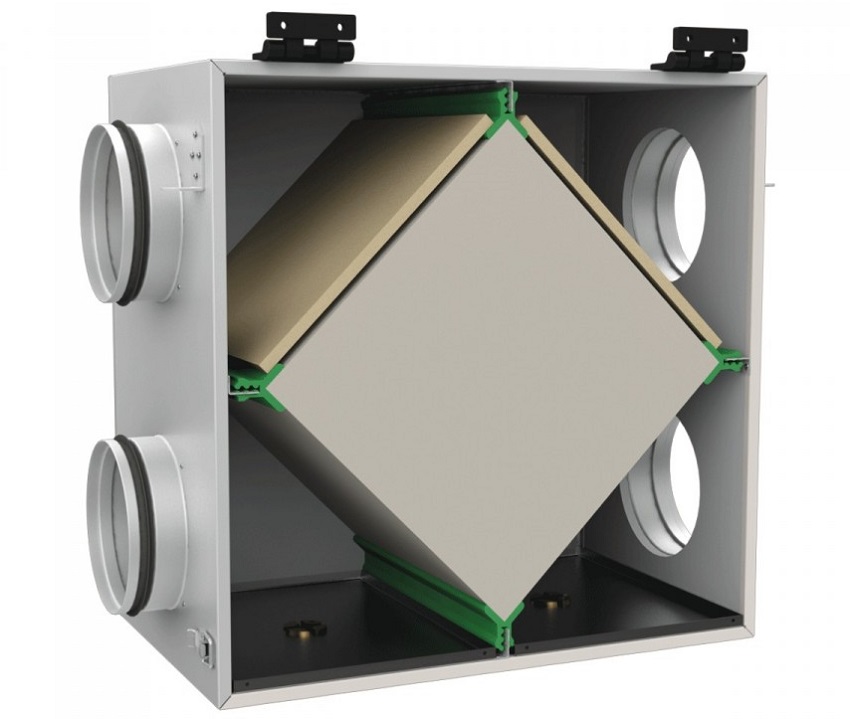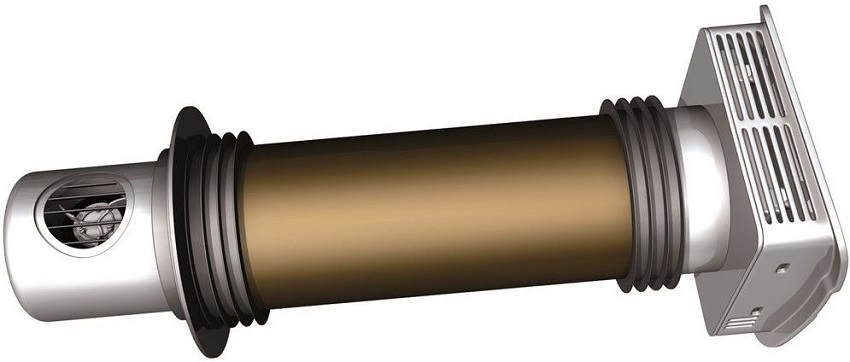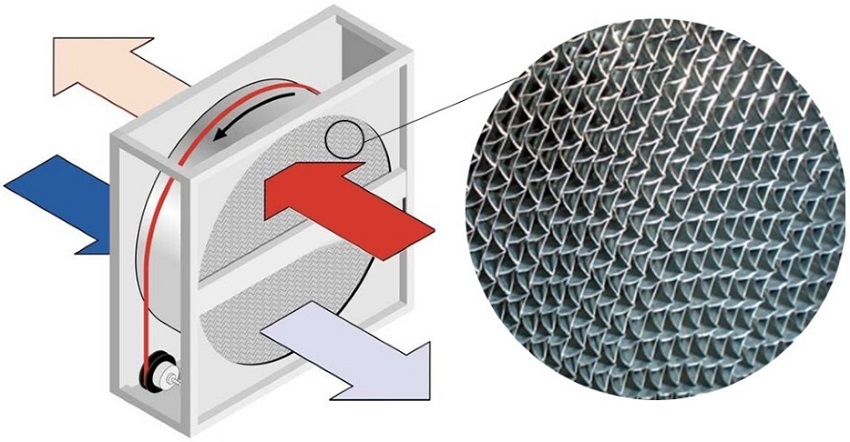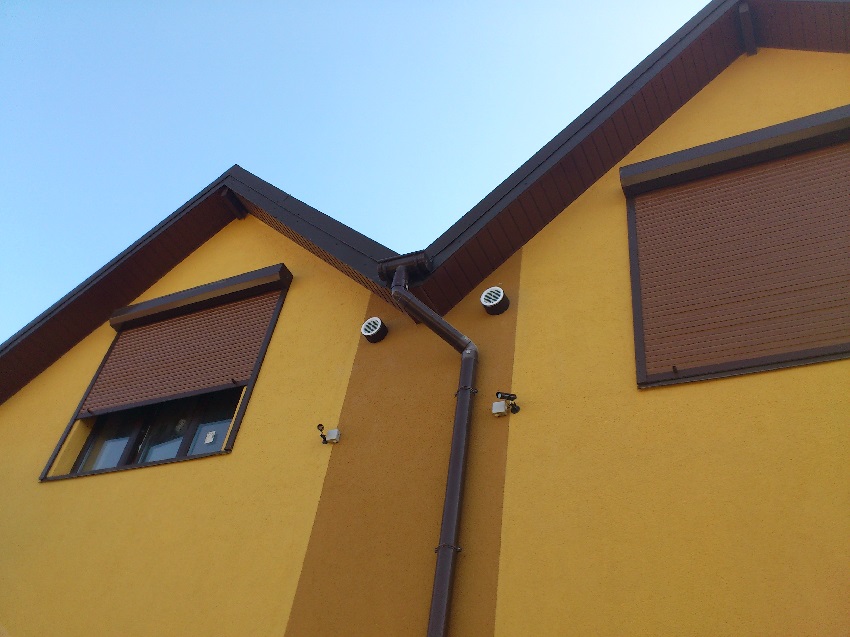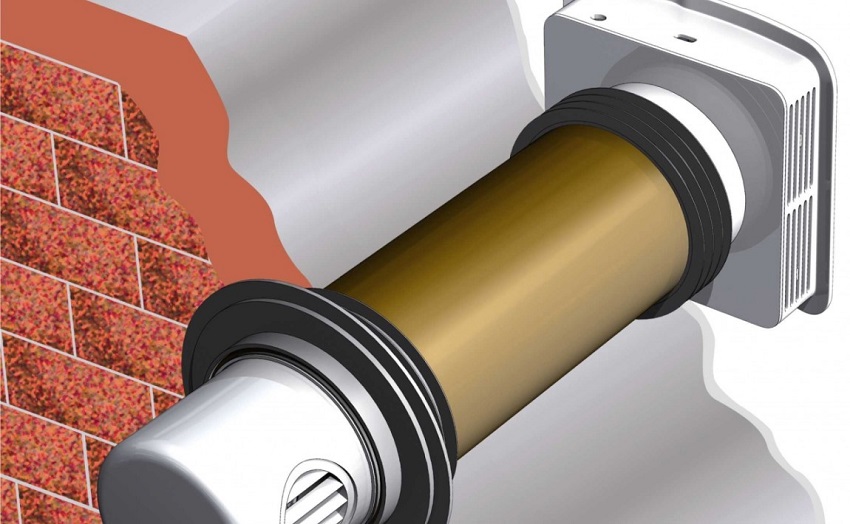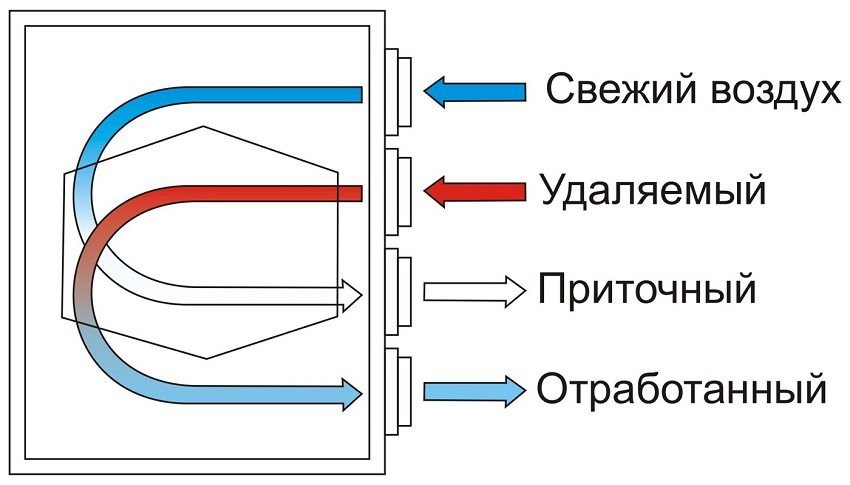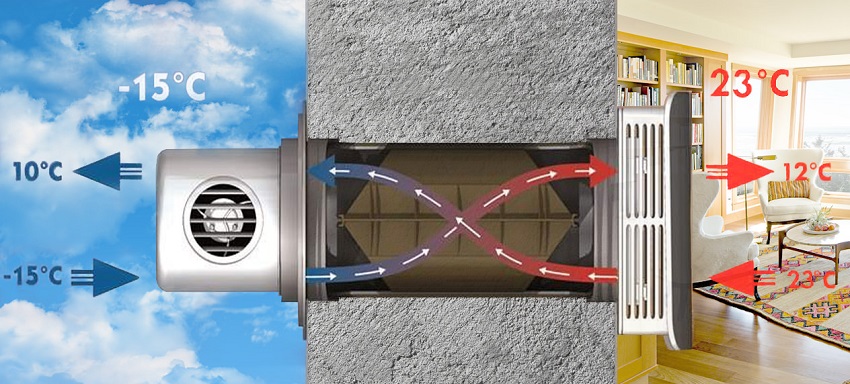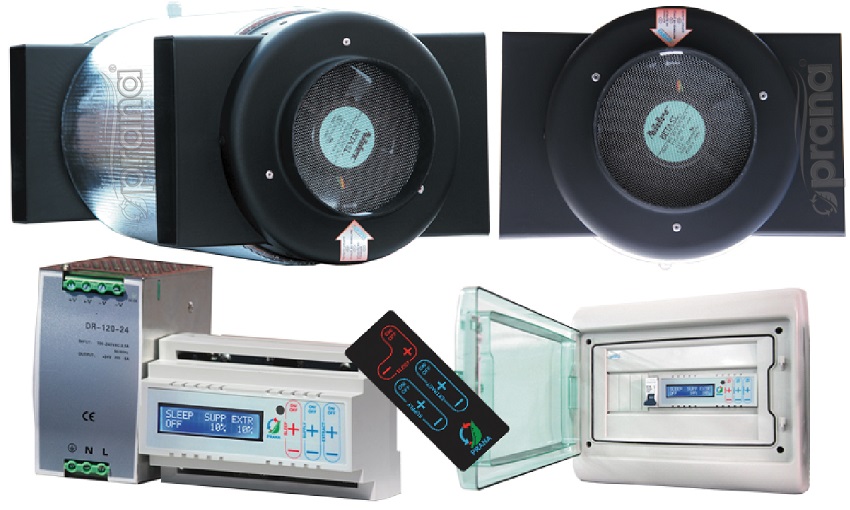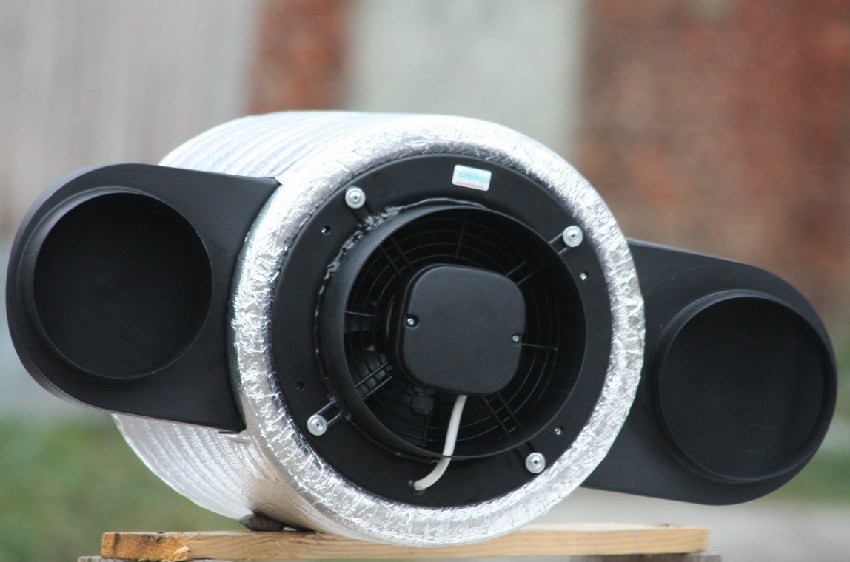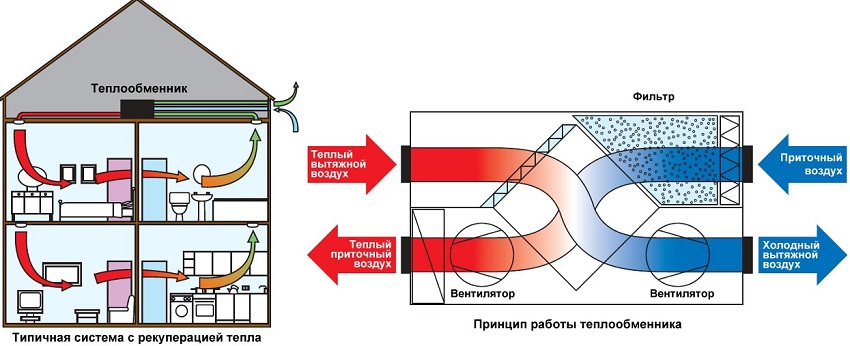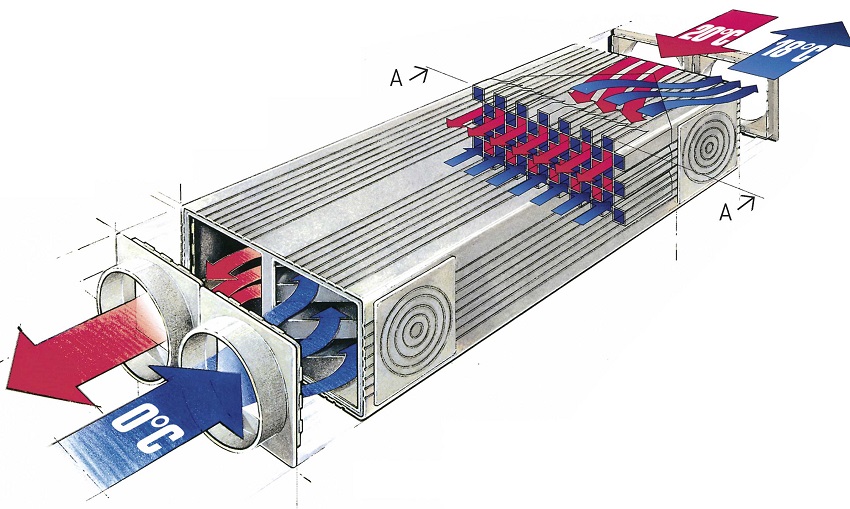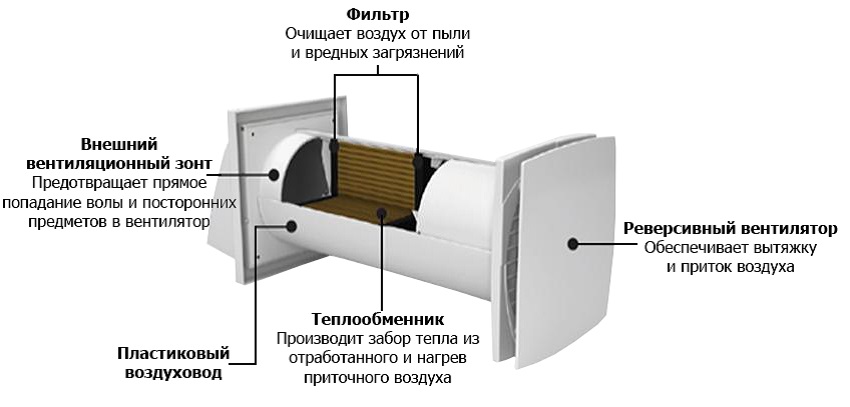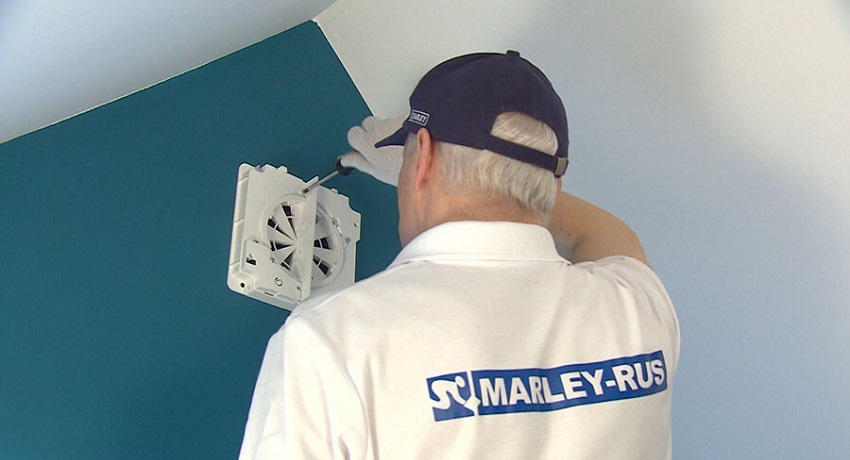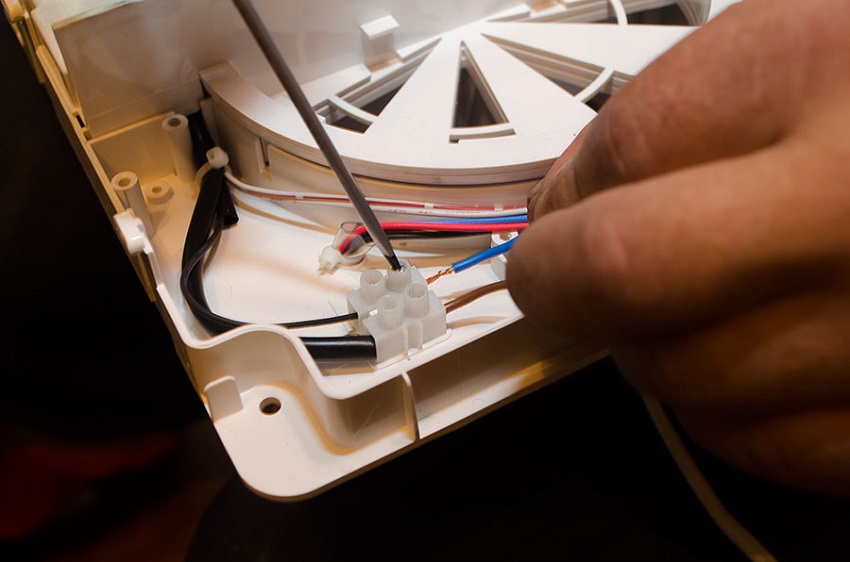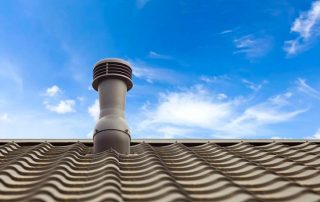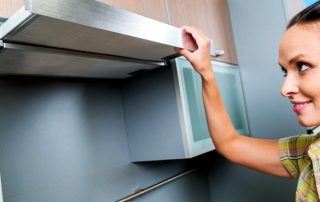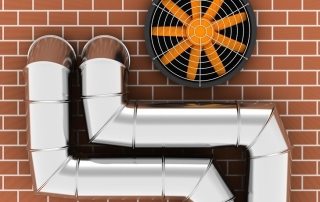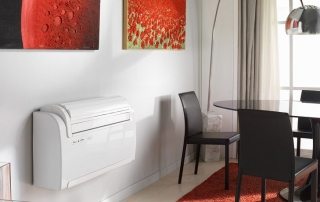Modern technologies that have come to our country are pushing the population to use the latest developments as well. Solar panels, room temperature controllers and other smart devices can not only reduce utility bills, but also maintain a comfortable indoor temperature. Of course, a recuperator for a private house cannot be called an innovation, however, the savings in money and heat are evident.
Content [Hide]
Recuperator: what is it
This unit is a construction similar to a house ventilation system. Their difference lies in the fact that conventional ventilation removes stale air from the room and fills it with fresh. The recuperator performs similar actions, only brings heated warm or cooled air into the house. The air conditioner performs similar functions, however, it requires electricity and refrigerant - freon, the heat exchanger does without it. Heating or cooling of the inflow occurs due to the heat exchange of the primary and secondary coolant through the wall separating the air masses.
The main link of the air handling unit with a recuperator is a heat exchanger. The device is equipped with a thermal electric heater or fan, check valves to prevent air movement in the opposite direction, and much more.
The use of such a system makes it possible to recover some of the heat energy usually lost when passing through the ventilation ducts. Warm air masses circulate freely in the heat exchanger, come into contact with the cold flow through the dividing wall and give the latter their thermal energy.
The surface-type recuperator is a double-walled heat exchanger. One channel is occupied by the outgoing primary coolant, the other is secondary, colder. The walls have high thermal conductivity and are installed to prevent mixing of air currents of different temperatures. The outgoing air element runs along the box, the incoming air element runs across. As a result of the return of heat to cold air, heated air masses enter the house.
The inlet air temperature depends on the outflow temperature. The warmer the outgoing jet, the higher the supply temperature.
Operating principle
The principle of operation of the recuperator is that it accumulates heat from the removed stream and communicates it with high efficiency to the air supply masses. This allows you not to spend money on heating and supply a fresh heated air element to the house.
The principle of the system is determined by two principles:
- The spent or stale air masses are removed from the room, pass through the ceramic reduction chamber and heat it up. In this case, almost 97% of thermal energy is given off. When the recovery chamber heats up, the heat exchanger automatically switches to the fresh stream inflow mode.
- The air passes through the ceramic reduction chamber, is heated by the heat stored in it and is fed into the house. Cooling down of the regenerator serves as a signal for switching on the fan to the exhaust mode.
Such a ventilation system by a recuperator allows you to reduce the consumption of gaseous, solid or liquid fuels, which may be necessary for the operation of other devices, and create a comfortable living environment.
Note! Installation of a supply and exhaust air recuperator for a home will save up to 80% of the heat in the room.
The advantages of a thermal power device
A thermal power device of this type has been gaining great popularity lately. There is no need to ventilate your home in summer and winter, thereby releasing precious heat into the street. On a dusty summer day, the device will supply the room with clean atmospheric air, which will first pass through an air cleaning filter.
Also, there is no need to use the mentioned system in manual mode - the automation will do it for you. Cold masses in winter will be heated due to the outgoing warm stream, and hot summer days will cool down with the release of heat by a cooler stream.
In addition, the system has a number of advantages:
- saving money on heating;
- savings on separate exhaust fans;
- removal of unpleasant heavy odors;
- removal of dust particles;
- ease of operation and installation;
- low cost of use;
- process automation;
- long service life of the system.
Even the periodic use of a heat engineering installation will allow saturating the dwelling with clean atmospheric air masses without losing heat or, conversely, increasing the temperature regime.
High-quality ventilation
Installing a recuperator will keep the house clean along with the inflow of fresh outside air. Tobacco, fireplace or other smoke, carbon dioxide or other unhealthy emissions, harmful or unpleasant odors - all within the power of a rotary recuperator. The work of the system has a beneficial effect on the human body, drying the air with high humidity, which is especially important for hypertensive patients, as well as people with atherosclerosis or cardiovascular diseases. In addition, high humidity threatens with other ailments.
Economical heating
By installing a heat recovery unit, you will ensure a stable saving not only of money, but also of the heat in the house. The outgoing warm flow will warm up the cold supply air to a comfortable temperature, which will significantly avoid unnecessary operation of the heating equipment. The heat engineering system carefully manages the heat entering its box, practically not allowing it to escape into the atmosphere.There is also no need to monitor the temperature of the incoming air masses, this will be done by the heat exchanger, supplying them with only a small temperature difference compared to the outgoing flow.
Important! According to experts, the savings in electricity or any type of fuel for heating devices is from 40 to 50%. Of course, you should not neglect the high-quality thermal insulation of the room.
No additional ventilation
Gas stoves, fireplaces, water heaters and weeping metal-plastic windows require additional ventilation or periodic ventilation. Frosty and hot seasons significantly complicate this process: the first threatens to cool the room, the second - dust and hot dry winds with low humidity. If you decide to buy an air recuperator, then ensure high-quality ventilation of the whole house, avoiding unnecessary financial expenses and installation of equipment for additional ventilation.
Quiet and high-quality air purification
In any case, the atmospheric supply air brings with it dust particles, dirt elements, diluted exhaust gases from cars, chimneys and industrial plants. An air filter installed in the heating device will rid the house of incoming unwanted odors and dust particles. Having passed high-quality cleaning, the atmospheric jet will fill the room with not only fresh, but also clean air. True, the latter will be conditioned by the necessary regular maintenance of the air filter and other elements of the system.
Note! A dust-clogged or uncleaned filter is a breeding ground for pathogenic bacteria. Cleaning it regularly and replacing it periodically will prevent the owner of the house from contracting respiratory infections.
Utilizers for an apartment or house have high operating efficiency and low noise level, which fluctuates in the range of 25-35 dB. This equates to the sound of the air conditioner.
Recuperator for a private house: types and characteristics
Supply and exhaust recuperators can have various design features. A sales assistant in any specialized store of heating equipment will help you choose the right option.
There are such types of equipment:
- lamellar;
- rotary;
- roof;
- recirculating water.
All of them are designed to create a favorable indoor climate, be it an apartment, a large mansion or a country house.
Related article:
How to choose an air conditioner for an apartment: effective cooling and air ventilation
Types and features of devices, additional functions. Calculation of power according to the parameters of the room. Care tips.
Lamellar
It is the most common type due to its good performance, ease of use and low price. A recuperator of this type is a fixed metal plate with a high specific heat and relatively low weight. Plates are collected in a kind of cassette, which slightly resembles a bee hive. Atmospheric air passes through the box of the apparatus with cassettes and is then heated or cooled, depending on the winter or summer season. Condensate formed during operation is discharged through a specially provided drainage outlet or channel.
Along with the listed advantages, the system has a certain disadvantage: the formation of ice in the box, which is especially evident in the autumn-winter period.
Rotary
A recuperator of this type carries out the inflow and outflow of the air jet due to the blades. The heating system has from one to two driven rotors, depending on the model. Externally, the installation looks like a cylindrical barrel with a drum.As the air is pumped out of the room and the cylindrical box heats up, atmospheric mass is taken.
The advantages of this device:
- improved efficiency;
- increased efficiency;
- absence of condensation, and, consequently, no discharge gutters;
- lack of ice;
- does not dry the air, which does not require additional humidification;
- regulation of the amount of air supply and intake due to the speed of rotation of the blades.
However, there are also disadvantages:
- increased power consumption;
- rotating elements wear out faster than stationary ones;
- the need for additional extraction to prevent possible mixing of incoming and outgoing air masses.
Note! Before purchasing a rotary recuperator, you need to take into account its increased power, which can lead to an increase in the section of the room's wiring.
Roof
This recuperator handles large air masses. The expediency of its use can be explained by a large mansion, other residential or non-residential premises. The principle of operation is in many ways similar to the plate-type unit, but the latter differs from the roof unit in smaller dimensions. Ease of installation of the device, low cost of maintenance and operation have made it indispensable in the ventilation devices of shops, repair shops, production areas. Installation of such a recuperator on the roof generally excludes the penetration of any sounds and noise into the room.
Glycol recuperator
Glycolic (or recirculating) regenerative apparatus combines the qualities of plate and rotary heat engineering devices. Its main difference from the previous ones is the use of an intermediate heat carrier. The latter is a water-glycol solution consisting of propylene glycol or ethylene diluted with distilled water. The mixture has a high heat capacity, allowing to utilize a large amount of heat, retains its working qualities at subzero temperatures. In severe low-temperature conditions, it is possible to replace the specified coolant with antifreeze. The equipment allows you to work simultaneously with several ventilation ducts, hoses or hoods.
Recuperator for an apartment: calculation and review of manufacturers
An apartment heat-and-power device will be the best acquisition, especially if the home is located in a big city or in the center of a metropolis. Automotive and industrial gases, street noise, heat or cold will forever remain outside the premises. The device will not only add a lot of clean air to the apartment, but will also save on heating, ventilation and cleaning the incoming atmospheric flow. This is achieved by a simple exchange of heat between the supply and extract air flows, which have passed through an insulating duct with a cleaning filter.
Recuperator calculation
You can calculate the required heat and power device yourself, without resorting to the services of specialized companies. The calculation of the efficiency and efficiency of the device is determined by the knowledge of the energy consumption for the supply or exhaust masses. The calculation formula is as follows:
Q = 0.335 x L x (t1 - t2),
where L is the flow rate of air masses, t1 - inflow temperature, t2 Is the temperature of the outgoing masses, 0.335 is the regional coefficient.
The calculation of efficiency is carried out according to the following formula:
E = Q x n,
where: Q - energy or electrical costs for heating or cooling the jet, n - device efficiency.
Useful advice! Before buying a recuperator for a private house or city apartment, you need to familiarize yourself with their types, technical characteristics and the principle of operation.It may be necessary to carry out preparatory installation work and draw up a project.
Recuperator PRANA
This manufacturer of heating and ventilation equipment has been on the market for over 15 years. Its equipment has a long service life, high efficiency and reasonable prices.
Operational characteristics of the device:
- type - lamellar;
- electricity consumption - 5-90 B / h, depending on the model;
- noise level - 25-140 dB;
- unit length - 500 mm;
- service area - from 60 m²;
- incoming jet - 115-650 m³ / h;
- outgoing jet - 105-610 m³ / h;
- Efficiency - 79-80%, depending on the model.
The entire model range is equipped with a remote control panel, operates at ambient temperatures from -15 to 45 ° C. The relatively low price of the air recuperator, significant retention of the set temperature during heating or heating and small dimensions make this device one of the most popular, which is confirmed by numerous positive reviews. The Prana recuperator can be built into the wall of the room or installed outside. Installation of the device is quite easy and is carried out within 2-3 hours.
You can only notice such a decentralized system by the presence of a ventilation grill on the wall. Not the least positive quality is the heat exchangers made of copper, which has an antimicrobial effect. The average price of an air recuperator for a home of this brand is about 25,000 rubles. The cost of devices with increased productivity ranges from 50 to 110 thousand rubles.
Recuperators MARLEY
The compact German heat exchanger is equipped with a ceramic heat exchanger that allows the device to be operated even at temperatures of -30ºC. Washing it and cleaning the air filters is a simple operation that can be carried out by an ordinary user. The duration of continuous operation is about 6 months, after this period the control lamp will light up. Using the device near highways or in the central part of the city will force you to resort to more frequent cleaning. This operation does not take much time and takes 15-20 minutes.
You can buy an air recuperator for the home, the price of which is 24,000 rubles, in a specialized store. At a fairly moderate cost, the device has the following performance characteristics:
- three power phases - 15, 25 and 40 m³ / h;
- consumed electric power - from 3.5 to 8 W;
- the rotor of the electric motor is brushless;
- noise level - 22, 29 and 35 dB;
- heat utilization - 80-85%;
- service area - from 60 m²;
- external dimensions - 285-500 mm. The small size of the unit allows it to be installed in a wall.
The new line of the Marley manufacturer is the menv 180 recuperator, which differs from the previous analogs in its low power consumption - only 3 W. Nice functional additions are:
- temperature, carbon dioxide and humidity controllers;
- improved aerodynamics;
- low noise level;
- waterproofing coating for work in damp residential or non-residential premises;
- high cleaning category of the supply jet.
By installing such a recuperator, the price of which is within 27,500 rubles, you will forget about street soot and exhaust gases, dust, fog and industrial emissions.
DIY recuperator
Any craftsman can make an air recuperator for home with his own hands. For this you will need:
- two sheets of galvanized steel;
- wood-laminated box for the shell of the apparatus;
- cork gaskets;
- silicone neutral sealant;
- pressure controller;
- metal corners;
- thermal insulation mineral wool.
An electric jigsaw, metal fasteners and connecting flanges are also useful for work.
Steel sheets must be cut into rectangular plates 200x300 mm in size. For this you need within 3-4 m² of steel. Cutting must be done very carefully so that the cuts do not have burrs and notches. For this purpose, it is recommended to use a special tool - a grinder or a hacksaw for metal.
Then the plates are stacked on top of each other with a gap of at least 4 mm. This distance is ensured by gluing around the perimeter of each element of thermal insulation material (cork, wood or textolite). After laying the plates, the joints are treated with a special neutral sealant.
The housing is then manufactured and sized appropriately to fit within its plate structure. Holes are cut in the walls of the housing, into which pre-prepared plastic flanges are inserted, which must correspond to the diameter of the air ducts. All joints are also carefully sealed.
When the sealant is dry, the plate structure is placed inside the case. The outer walls must be lined with insulating material such as foam or glass wool. The finished structure, in order to increase the aesthetic component, can be placed in a wooden box.
Note! Visually noticeable crevices and cuts of the box of a self-assembled recuperator for a private house must be filled with a silicone neutral hermetic mass.
Previously, recuperators and ventilation systems were installed only in industrial production, coal and mining mines. Today, thermal engineering devices for the utilization of exhaust gases are increasingly located in houses and apartments.
An industrial apparatus or a self-assembled air recuperator becomes our irreplaceable assistant. It supplies clean, cooled or heated ambient air, cleans the house from dust and unpleasant odors, and saves some money on heating the room.
